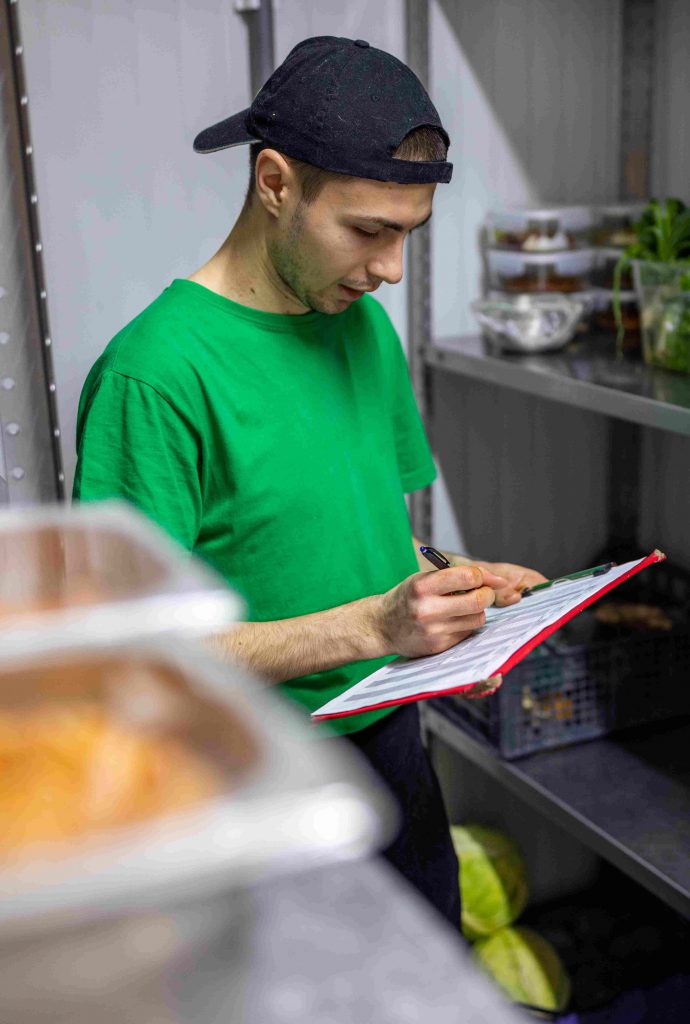Harmful bacteria can cause food poisoning and damage the reputation of catering businesses and commercial kitchens. Effectively minimising risk works across the entire production flow: starting from when the product is received right through to transportation to its final destination. Each step of the process requires respective operations and protocols to keep food products safe and hygienic.
Steps to Safety
Receiving Product
At the arrival stage, if food is delivered in cardboard boxes, throw boxes in the recycling bin and any spoiled products into organic waste bins. Organisms can hitch a ride to the storeroom via corrugations in the packaging.

Storage
Place the food in clean storage boxes with tightfitting
lids in the storeroom, and perishables in the coolroom within 15 minutes of delivery. In the coolroom, make sure cooked and raw foods are separated and labelled with the date and food type. Use food on a FIFO (first in, first out) basis to keep ingredients fresh.
Prep and Cooking
The temperature danger zone for bacterial growth in food is between 5°C and 60°C. That’s why thawing food at room
temperature is risky. The quicker food is heated or chilled, the safer.
Cross-contamination can be prevented by using colour-coded chopping boards and utensils. Clean and sanitise equipment regularly and always wash hands before handling food. Factor in a regular shelf clean to your weekly schedule.
Serving
When serving food, make sure it stays out of the danger zone by using a bain-marie or ice. Caterers can avoid the danger zone by using insulated food carriers. Safe commercial kitchens have ways to minimise hazards at every step. These steps are documented in Hazard Analysis and Critical Control Point (HACCP) records.